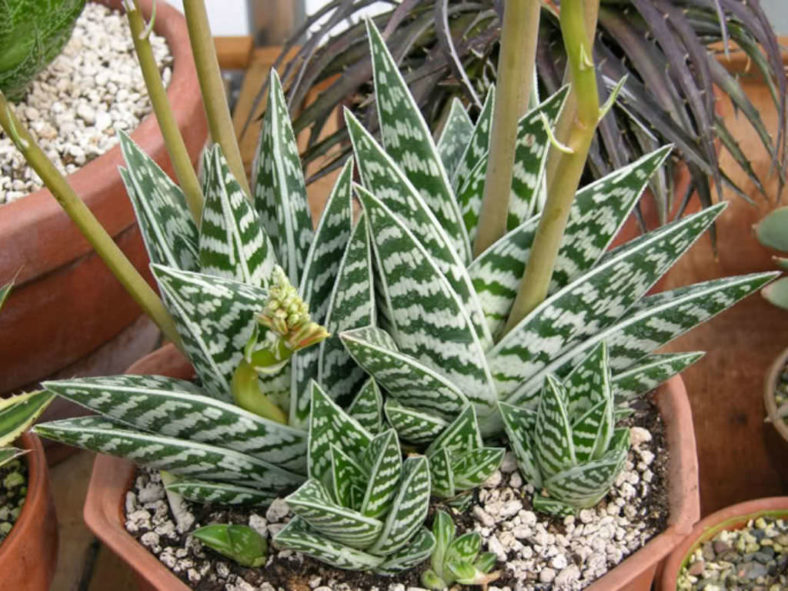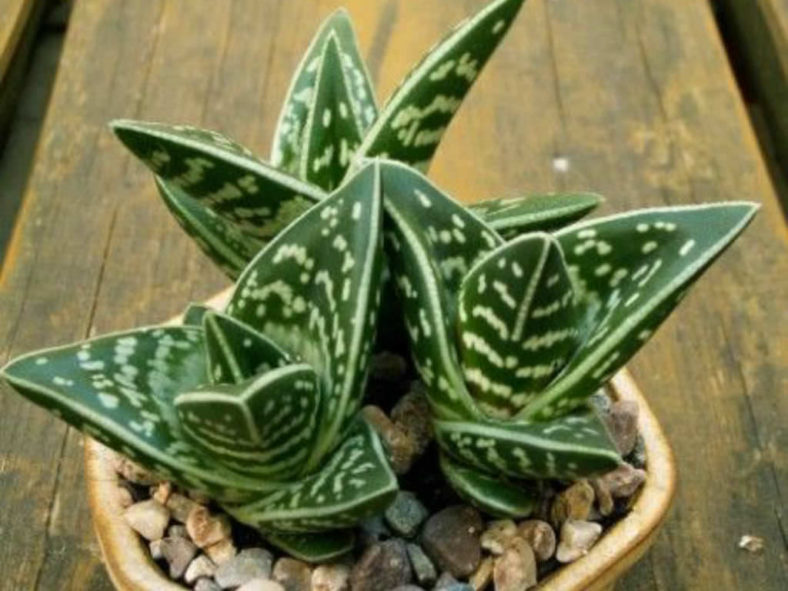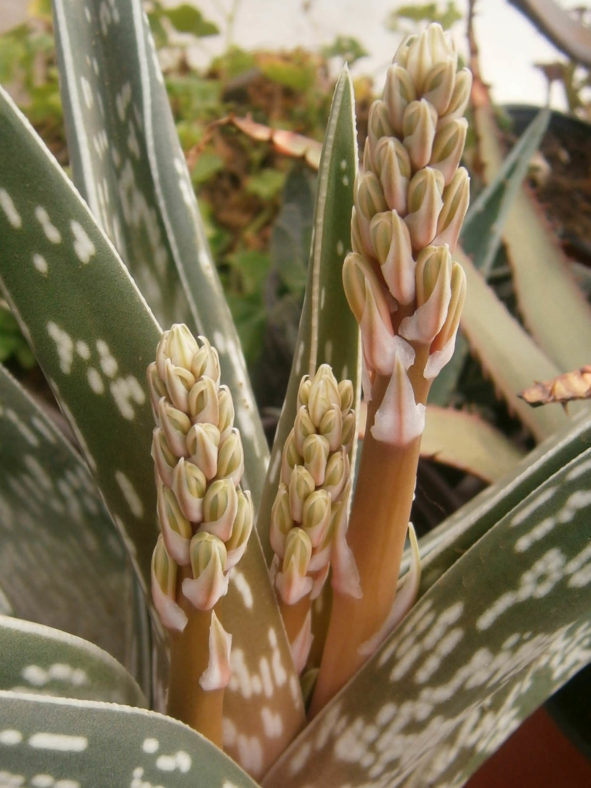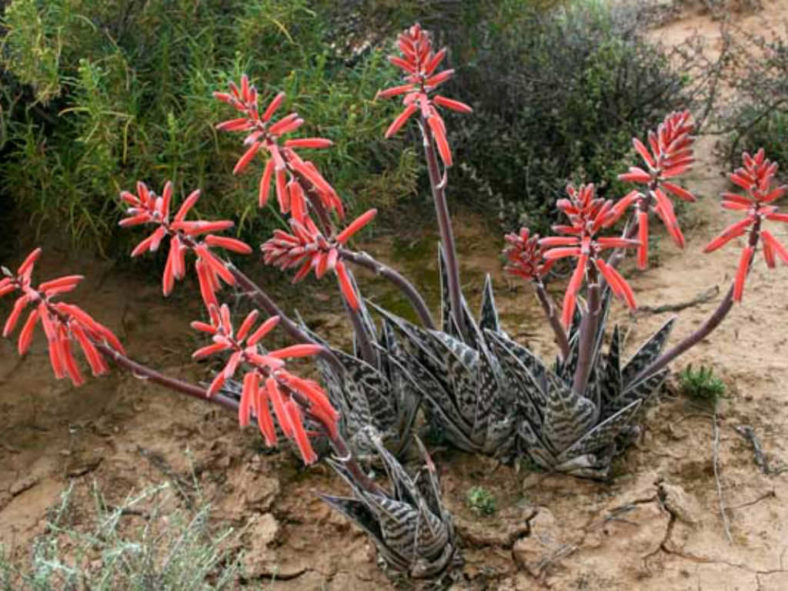Scientific Name
Gonialoe variegata (L.) Boatwr. & J.C.Manning
Common Name(s)
Partridge Breast Aloe, Partridge-breasted Aloe, Tiger Aloe
Synonym(s)
Aloe variegata, Tulista variegata
Scientific Classification
Family: Asphodelaceae
Subfamily: Asphodeloideae
Tribe: Aloeae
Genus: Gonialoe
Etymology
The specific epithet "variegata" (pronounced "var-ee-GAY-tuh") means "variegated; having a pattern of different colors or marks" and refers to the variegated leaves of this species.
Origin
Gonialoe variegata is native to South Africa (Eastern Cape, Western Cape, Northern Cape, and Free State) and Namibia.
Description
Gonialoe variegata, formerly known as Aloe variegata, is a small, stemless succulent with 18 to 24 smooth, dark green leaves with irregular, light green banding and margins sporadically armed with tiny, white teeth. It can grow up to 12 inches (30 cm) tall and 9 inches (23 cm) wide. The leaves are arranged in 3 ranks, measuring up to 6 inches (15 cm) long and 2.4 inches (6 cm) wide. The dark green color of the leaves turns brown when the plant is drought-stressed.
The inflorescence is a mostly branched raceme with hanging, relatively large flowers. The flowers are usually orange with green edges, but may vary from flesh-pink to dull red and rarely yellow. They appear in winter or early spring and can reach up to 18 inches (45 cm) in length.
Hybrids of Gonialoe variegata

Hardiness
USDA hardiness zone 9a to 11b: from 20°F (-6.7°C) to 50°F (10°C).
How to Grow and Care
Tiger Aloe has the same requirements as Aloe. The plant is suited for warmer zones and may be taken outside in summer in cooler areas. Don't forget to bring it in when cold temperatures are approaching, as the plant is only hardy in USDA Hardiness Zones 9 to 11. Most gardeners will find it easier to grow the plant indoors alone in a container or as part of a succulent display.
Water deeply but rarely, and let the soil dry out between waterings. The plant grows slowly but should be repotted in a succulent soil mix every three years. The biggest problem with Tiger Aloe is overwatering, which can cause the plant to rot.
A fun thing about these plants is their ability to produce fully vegetative babies or offsets for propagation. Divide these away from the parent plant and place them in a container. They will root quickly and provide you with more of these amazing plants to populate your landscape.
Learn more at How to Grow and Care for Aloe.
Links
- Back to genus Gonialoe
- Succupedia: Browse succulents by Scientific Name, Common Name, Genus, Family, USDA Hardiness Zone, Origin, or cacti by Genus
Photo Gallery
Click on a photo to see a larger version.


